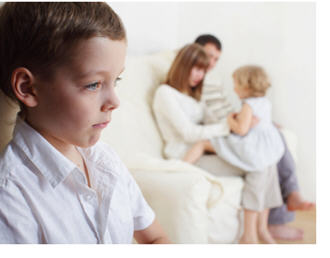Confusion Surrounds Bullying, Says Study
Adults and children don't always identify the same behavors as "bullying"
October 29, 2004—While children and adults have similar intellectual definitions of bullying, they may differ when applying them in reality, says a University of Toronto researcher.
"There are complexities that can interfere with how we view bullying incidents," says Professor Faye Mishna of the Faculty of Social Work. "While we're identifying important strategies and tips on how to deal with bullying problems, it's important to also acknowledge how confusing it can be for the victim, parents and educators to decide what actual incidents constitute bullying."
These complexities are outlined in a paper published this month in the journal Children & Schools. Mishna led a research team which investigated children's experiences of victimization by bullying and then compared the children's perspectives with those of their parents and educators. Researchers surveyed 61 children in grades four and five and held interviews with selected children who self-identified as victims of bullying, one parent, the child's teacher, and their school's vice-principal and principal.
"We found that when you ask children and adults what bullying is, they're able to identify important aspects such as the power imbalance between the bully and the victim," says Mishna. "But what happens when a friend is actually the bully? Parents may think that some bullying behavior is part of normal friendships, even when the victim is hurt. As a result, the parents may think it's not their place to intervene."
Other complications can occur when the victim is thought to provoke the bully; when educators do not feel compassion for the victim or feel more compassion for the bully than the victim; and when the incident is not considered serious. "One teacher depicted bullying as 'part of growing up' and as a good thing that helped victims learn to deal with others who are controlling or manipulative," says Mishna. "At times a child considered a situation bullying, whereas the adult ascribed another meaning and concluded that the same situation was not bullying."
Mishna hopes the research, which was a pilot study that was preparatory to a larger study, will help children and adults become aware of their attitudes and beliefs and enable social service providers and educators to create interventions tailored to the dynamics that might exist in some friendships. She says it's crucial for adults to validate the distress felt by a bullied child even when the adult does not consider the situation to be bullying.
"It's important that individuals become aware of their own reasoning," says Mishna. "When children are not listened to and validated, they may doubt their own perspective. They then may stop telling adults about their victimization."
ARTICLE:
"A Qualitative Study of Bullying from Multiple Perspectives," Faye Mishna. Children and Schools (2004) 26 (4): 234-247. doi: 10.1093/cs/26.4.234
RELATED RESEARCH:
Sibling Bullying: What's the Big Deal?Bullying Prevention Begins at Home
Sibling Relationships: A Bully in the Family
Social Bullying Prevalent in Children's Television

